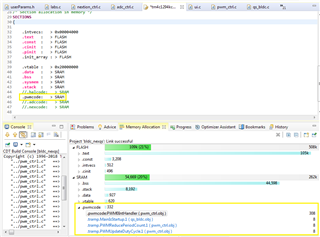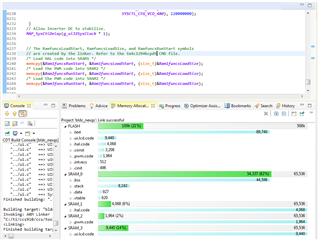Hello,
The memory allocation shows the compiled project is below 1 megabyte after moving parts of flash functions to RAM via 6 pragma statements. However the compiled bin file grew to 512MB and was initially 106KB without moving functions from flash to RAM via #pragma. Why is the *.out file size 934KB relatively small and why does the Memory Allocation tool show much smaller bin file size?




